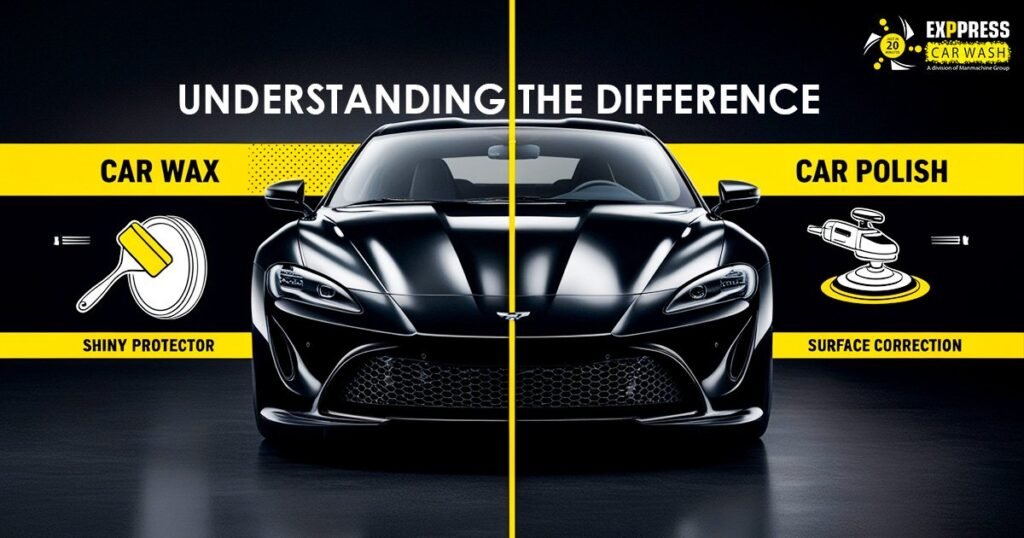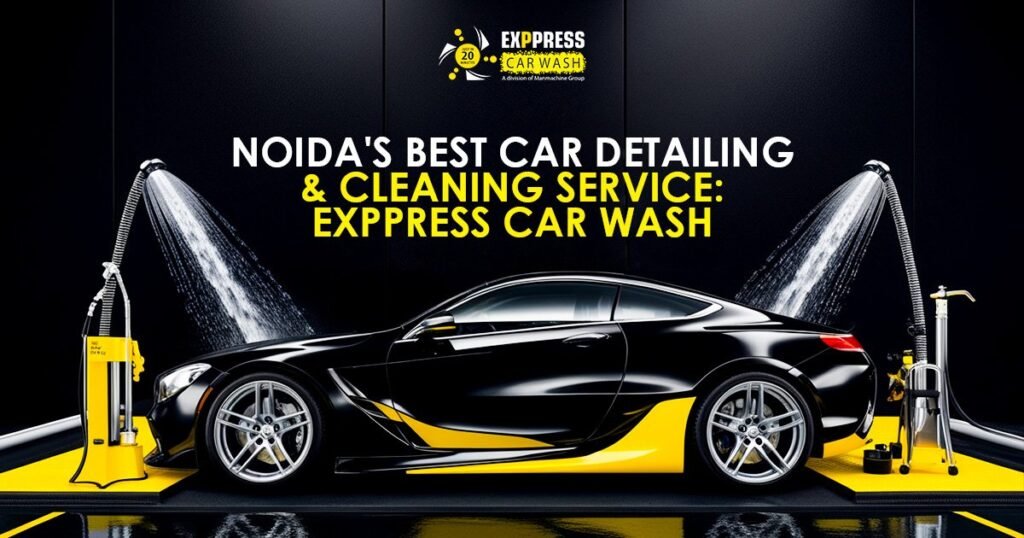5 Car Detailing Myths That You Should Stop Believing | Exppress Car Wash

Car detailing is more than just a cosmetic treatment for your vehicle; it is a meticulous process that involves cleaning, restoration, and protection of your car, both inside and out. However, with the plethora of information available online and passed down through generations, there are several myths surrounding car detailing that may be misleading.
In this blog, we will debunk five common car detailing myths to help you make informed decisions about the care of your vehicle.
Myth #1: Washing your car with dish soap is safe
A car detailing franchise allows entrepreneurs to enter the automotive service industry with the support of a proven brand. Franchisees benefit from expert training, access to high-quality products, and operational support, enabling them to offer premium services like paint correction and interior restoration. This business model reduces startup risks and helps build customer loyalty, making it an ideal choice for those passionate about vehicle care.
Reality: One of the most prevalent myths in car detailing is that washing your car with dish soap is a safe and effective way to clean it. While it is true that dish soap is designed to cut through grease and grime, using it on your car can lead to unintended consequences.
Dish soap is formulated to strip away oils and waxes, and while this may be suitable for dishes, it can be detrimental to your car’s paint.
Car paints are designed to be hydrophobic, meaning they repel water. Dish soap can strip away the protective wax layer on your car, leaving the paint exposed to the elements. This can lead to a dull finish, increased vulnerability to environmental contaminants, and a faster rate of oxidation.
Instead, opt for a pH-balanced Mafra car wash shampoo specifically formulated for automotive surfaces. These products effectively clean your car without compromising its protective layers.
Myth #2: Waxing your car is only for aesthetic purposes
Reality: Many car owners believe that waxing is purely for aesthetic purposes, giving the vehicle a glossy finish. While waxing does contribute to a visually appealing shine, its benefits extend far beyond aesthetics. Car wax serves as a protective layer that shields your car’s paint from various environmental elements.
Wax acts as a barrier against UV rays, preventing paint fading and oxidation. It also protects against contaminants like bird droppings, tree sap, and road salt, which can damage the paint over time. Regular waxing not only maintains your car’s glossy appearance but also enhances its longevity, preserving the resale value.
Myth #3: Using more soap equals a cleaner car
Reality: The belief that using more soap will result in a cleaner car is a common misconception. In reality, excessive soap usage can be counterproductive and may even harm your car’s finish. Using more soap than recommended can leave behind a soapy residue that attracts dirt and grime, making your car appear dirtier sooner.
Follow the manufacturer’s guidelines on the car wash product to ensure the proper soap-to-water ratio. Using a high-quality, pH-balanced Mafra car wash shampoo in the right proportion ensures effective cleaning without compromising the integrity of your car’s paint or wax.
Myth #4: All microfiber towels are the same
Reality: Microfiber towels are a staple in car detailing, known for their softness and ability to trap dirt and debris. However, assuming that all microfiber towels are created equal is a misconception that can lead to unintentional damage to your car’s surfaces.
Microfiber towels come in various grades and thicknesses. Using low-quality or abrasive microfiber towels can cause micro-scratches on your car’s paint, diminishing its appearance over time.
It’s crucial to invest in high-quality, plush microfiber towels for both washing and drying your car. Look for towels with a higher GSM (grams per square meter) for better absorbency and gentleness on your vehicle’s surfaces.
Myth #5: Detailing products can miraculously fix all scratches and dents
Reality: While car detailing products play a vital role in maintaining and enhancing your vehicle’s appearance, they are not magical solutions for all scratches and dents. Some myths suggest that applying a detailing product can miraculously erase deep scratches or dents, eliminating the need for professional repair.
In reality, the effectiveness of car detailing products varies based on the severity of the damage. Minor surface scratches and swirl marks can be improved with the right polishing or cutting compound, but deep scratches or dents may require professional attention.
It’s essential to manage expectations and understand the limitations of detailing products. Regular maintenance and timely addressing of minor imperfections can prevent them from worsening, but major repairs should be entrusted to automotive professionals.
Conclusion
Car detailing is a nuanced process that goes beyond mere aesthetics, encompassing the health and longevity of your vehicle. Debunking these five common myths can empower car owners to make informed decisions about their detailing practices.
Using the right products, techniques, and understanding the limitations of detailing can contribute to a well-maintained and protected vehicle. Remember, a properly detailed car not only looks good but also maintains its value and performance over time.
So, let go of these myths and embrace a more informed approach to car detailing for the benefit of your beloved vehicle.
Visit Exppress Car Wash’s official website at https://exppresscarwash.com/ or call us at +91-80-100-44-000
Frequently Asked Questions
Ques. 1. What is detailing on a car?
Ans. Car detailing is a comprehensive and meticulous process of cleaning, restoration, and protection of a vehicle, both inside and out. It goes beyond a standard car wash, addressing the finer details to enhance the vehicle’s appearance and preserve its overall condition.
Detailing involves thorough cleaning, polishing, and protection of various surfaces, including the exterior paint, wheels, tires, glass, and interior components. The goal of car detailing is to not only make the car look aesthetically pleasing but also to ensure its longevity and resale value by safeguarding it against environmental contaminants and wear.
Ques. 2. What does full car detailing mean?
Ans. Full car detailing refers to a thorough and all-encompassing treatment of a vehicle, covering both its exterior and interior aspects. This process goes beyond a basic car wash and includes meticulous cleaning, polishing, and protection of various surfaces.
Exterior detailing typically involves washing, claying, polishing, and waxing the paint, as well as cleaning and dressing the wheels and tires.
Interior detailing includes cleaning and conditioning surfaces such as the dashboard, seats, carpets, and door panels.
Full car detailing aims to restore the vehicle to its optimal condition, addressing both the visible and hidden aspects of wear and tear.
Ques. 3. What all is done in car detailing?
Ans. Car detailing encompasses a range of tasks to ensure the vehicle’s thorough cleanliness, appearance enhancement, and protection.
The key components of car detailing include:
Washing: Using a Mafra pH-balanced car wash shampoo to clean the exterior surfaces without damaging the paint or stripping protective layers.
Claying: Removing embedded contaminants from the paint surface to create a smooth and clean foundation for subsequent treatments.
Polishing: Eliminating minor scratches, swirl marks, and enhancing the paint’s gloss and shine through the application of polishing compounds.
Waxing: Applying a protective layer of wax to the paint, safeguarding it from UV rays, environmental contaminants, and providing a glossy finish.
Wheel and Tire Care: Cleaning and dressing wheels and tires to enhance their appearance and protect against brake dust and road grime.
Interior Cleaning: Thorough cleaning of the interior, including vacuuming, wiping surfaces, and conditioning materials to maintain a fresh and well-kept interior.
Microfiber Towel Usage: Choosing high-quality, plush microfiber towels for washing and drying to avoid scratches and maintain the integrity of the vehicle’s surfaces.
Managing Scratches and Dents: Acknowledging the limitations of detailing products in addressing scratches and dents, and knowing when the professional repair is necessary.
Overall, car detailing is a holistic approach to vehicle care, ensuring not only a visually appealing appearance but also the long-term health and performance of the car.


